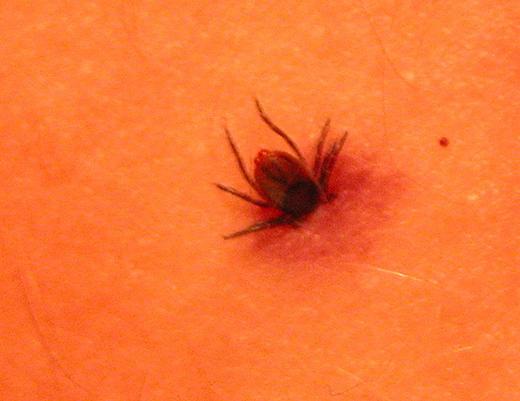Difference Between Zoonotic Diseases and Vector Borne Diseases
What are zoonotic diseases and vector borne diseases?
Zoonotic diseases and vector (insect) borne illnesses are 2 primary categories of infectious illnesses that involve vectors (blood sucking arthropods) and animal hosts.
Both Zoonotic diseases and vector (insect) borne illnesses are caused by bacteria, fungi, viruses, parasites, etc. Most of the times, these illnesses are preventable and curable by taking proper precautions, maintaining good hygiene and antibiotics. However, sometimes, these illnesses are severe and could also prove fatal.
Similarity
Zoonotic and vector-borne diseases are 2 main categories of infectious diseases/illnesses that entail involvement of animal hosts or vectors. Other similarities include;
- Both illnesses are infectious and both the diseases make humans sick and unwell
- The main causes of these diseases are bacterial agents, viral agents, fungal agents and protozoans
- Both the illnesses are preventable by taking antibiotics and proper precautions
- Both zoonotic diseases and vector borne diseases are often climate-sensitive.

Zoonotic diseases
Diseases spread from animals to humans. More specifically, an illness/disease that usually exists in animals but that can transmit infection to humans. There are multitudes of zoonotic diseases.

Vector borne diseases
Diseases spread through arthropod (mosquitoes, ticks, fleas) vectors. Vector-Borne Disease: Disease that results from an infection transmitted to humans and other animals by blood-feeding arthropods, such as mosquitoes, ticks, and fleas. Examples of vector-borne diseases include Dengue fever, West Nile Virus, Lyme disease, and malaria.
Difference between zoonotic diseases and vector borne diseases
Description
Zoonotic diseases
Zoonotic diseases are the diseases that are transmitted from animals to human beings.
Vector borne diseases
Vector (insect)-borne diseases are the diseases that are transmitted by carrier vectors like mosquitoes, fleas, mites and ticks. These diseases are spread by the bite of infected blood-feeding arthropods (vectors)
How they are transmitted?
Zoonotic diseases
Zoonoses can spread in various ways:
- By consuming infectious/contaminated meat
- Through the air
- By getting closely exposed to an infected animal
- Through contaminated or infected surfaces or places – areas already touched by an infected animal
- Through bites and saliva or insects (vector) like mosquitos, fleas or ticks
- Some other ways through which zoonotic diseases spread include when humans go for biking, boating, hiking or other outdoor activities.
- Petting zoos are another source of transmission. Even ticks and fleas that are present on pets at home can also spread zoonoses.
- People working in farms, where common carriers of zoonotic diseases are infected livestock also can spread many zoonoses.
Vector borne diseases
Vector borne diseases can spread in various ways:
- Direct contact – Exposure to blood, saliva, mucous, urine, feces, or other body fluids of an infected animal. Examples could be touching animals, bites or scratches.
- Indirect contact – pet dwellings (where pets live and roam), pet eatables, pet dishes (in which they eat and drink) – especially with pets such as dogs, cats, etc. chicken coops, fish aquarium water etc. These places, surfaces in these places and objects could be infected/contaminated with germs.
- Vector-borne – Spreads through bites of vectors like flea, mites, ticks or mosquitoes.
- Foodborne – consumption of infectious or contaminated foods – undercooked eggs or meat, unpasteurized and infected milk, raw veggies and fruits that might be infected with excreta of an infected animal.
Examples
Zoonotic diseases
- Zoonotic influenza
- Salmonellosis – a symptomatic infection triggered by bacteria of the Salmonella type
- Dengue, malaria, and chikungunya
- West Nile virus – is the primary cause of mosquito-borne disease
- Plague
- Psittacosis (mostly affects lungs and is transmitted to people through coming in contact with infected Aves (birds) like parrots, parakeets and cockatiels
- Emerging coronaviruses (e.g., severe acute respiratory syndrome and Middle East respiratory syndrome)
- Rabies (damage of the nervous system of mammals)
- Brucellosis – Mediterranean fever – people are infected by eating raw or unpasteurized dairy products.
- Lyme disease – also termed as Lyme borreliosis. A tick-borne illness triggered by the bacterium Borrelia burgdorferi.
Vector borne diseases
- Chagas disease – also termed as American trypanosomiasis, is a tropical parasitic illness caused by Trypanosoma cruzi.
- Chikungunya – spread to people by the bite of an infected mosquito
- Congo-Crimean hemorrhagic fever (CCHF) is triggered by infection with a tick-borne virus (Nairovirus – Nairobi sheep disease virus) in the family Bunyaviridae (transmitted by hematophagous arthropods including mosquitoes, midges, flies, and ticks).
- Dengue
- Dracunculiasis (guinea-worm disease) – a parasitic infection caused due to drinking of unsafe water
- Human African trypanosomiasis – (African trypanosomiasis) – It is a vector-borne parasitic disease also called as sleeping sickness. It is caused by the parasite named – Trypanosoma brucei
- Leishmaniasis – disease transmitted by parasites of the Leishmania type
- Lymphatic filariasis – travels to the lymph system of human beings and is transmitted by the infected mosquitoes
Summary
The points of difference between zoonotic diseases and vector borne diseases have been summarized as below:

- Difference Between Global Warming and Greenhouse Effect - May 18, 2024
- Difference Between Vaccination and Immunization - March 3, 2024
- Difference Between Selective Mutism and Autism - February 25, 2024
Search DifferenceBetween.net :
Leave a Response
References :
[0]Gubler, D. J. (2009). Vector-borne diseases. Revue scientifique et technique (International Office of Epizootics), 28(2), 583-588.
[1]Karesh, W. B., Dobson, A., Lloyd-Smith, J. O., Lubroth, J., Dixon, M. A., Bennett, M., ... & Machalaba, C. C. (2012). Ecology of zoonoses: natural and unnatural histories. The Lancet, 380(9857), 1936-1945.
[2]Kilpatrick, A. M., & Randolph, S. E. (2012). Drivers, dynamics, and control of emerging vector-borne zoonotic diseases. The Lancet, 380(9857), 1946-1955.
[3]Otranto, D., Dantas-Torres, F., & Breitschwerdt, E. B. (2009). Managing canine vector-borne diseases of zoonotic concern: part one. Trends in Parasitology, 25(4), 157-163.
[4]Image credit: https://www.ucdavis.edu/sites/default/files/styles/panopoly_image_full/public/images/article/tick-embedded-lyme-disease.jpg?itok=8Wb6pk17
[5]Image credit: https://pixnio.com/free-images/science/microscopy-images/leptospirosis-leptospira-spp/leptospirosis-is-a-common-global-zoonotic-disease-of-man-and-several-warm-blooded-animals-725x491.jpg
